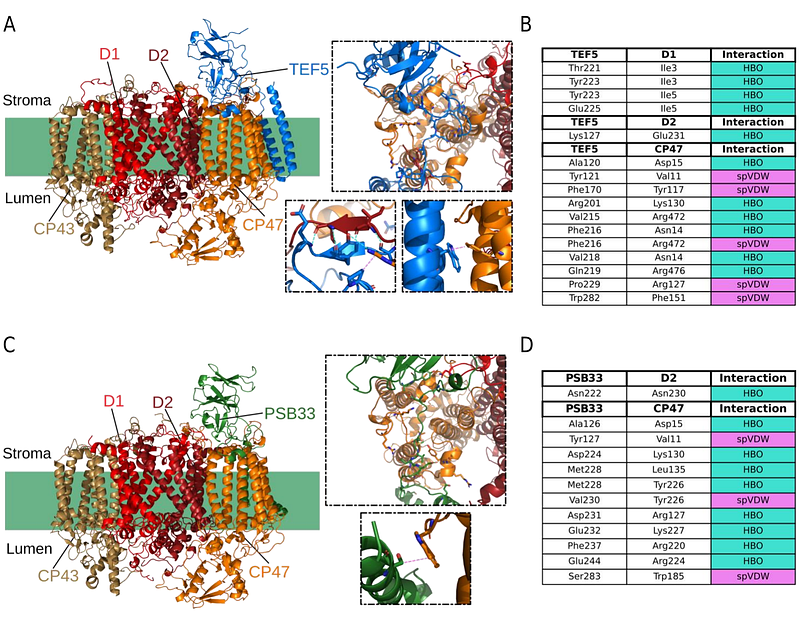Complexome profiling of the Chlamydomonas psb28 mutant reveals THYLAKOID ENRICHED FRACTION 5 as an early photosystem II assembly factor

Complexome profiling of the Chlamydomonas psb28 mutant reveals THYLAKOID ENRICHED FRACTION 5 as an early photosystem II assembly factor
Lang, J.; König, K.; Venn, B.; Spaniol, B.; Spaniol, L.; Sommer, F. K.; Mustas, M.; Geimer, S.; Färtges, T.; Brzezowski, P.; Zabret, J.; Wollman, F.-A.; Nowaczyk, M. M.; Scheuring, D.; Rudack, T.; Mühlhaus, T.; Choquet, Y.; Schroda, M.
AbstractSeveral auxiliary factors are required for the assembly of photosystem (PS) II, one of which is Psb28. While the absence of Psb28 in cyanobacteria has little effect on PSII assembly, we show here that the Chlamydomonas psb28-null mutant is severely impaired in PSII assembly, showing drastically reduced PSII supercomplexes, dimers and monomers, while overaccumulating RCII, CP43mod and D1mod. The mutant had less PSI and more Cytb6f and showed fewer thylakoid stacks and distorted chloroplast morphology. Complexome profiling of the psb28 mutant revealed that TEF5, the homolog of Arabidopsis PSB33/LIL8, co-migrated particularly with RCII. TEF5 also interacted with PSI. A Chlamydomonas tef5 null mutant is also severely impaired in PSII assembly and overaccumulates RCII and CP43mod. RC47 was not detectable in the light-grown tef5 mutant. Our data suggest a possible role for TEF5 in facilitating the assembly of CP47mod into RCII. Both the psb28 and tef5 mutants exhibited decreased synthesis of CP47 and PsbH, suggesting negative feedback regulation possibly exerted by the accumulation of RCII and/or CP43mod in both mutants. The strong effects of missing auxiliary factors on PSII assembly in Chlamydomonas suggest a more effective protein quality control system in this alga than in land plants and cyanobacteria.


